A decade ago, it was almost impossible to find an adult trike on sale in the UK. But in the intervening years, adult tricycles have undergone an explosion in popularity, resulting in a wide range of options for those wanting to ride on three wheels.
Now, you can find tricycles with different wheel configurations, off-road tricycles, electric tricycles and disability tricycles.
In this guide, we explore the world of tricycles for adults and everything you need to know if you’re looking to buy a tricycle.
We outline the pros and cons of tricycles, the styles and functions of different models and who would find them most beneficial, as well as the realities of riding a trike. You can jump to the different sections by hitting the links below:
- What is an adult tricycle?
- Pros and cons of adult tricycles
- Types of adult tricycles
- How to choose an adult tricycle
- Adult tricycle features
- Are tricycles safe for adults?
- Is it legal to cycle a tricycle on the road?
What is an adult tricycle?
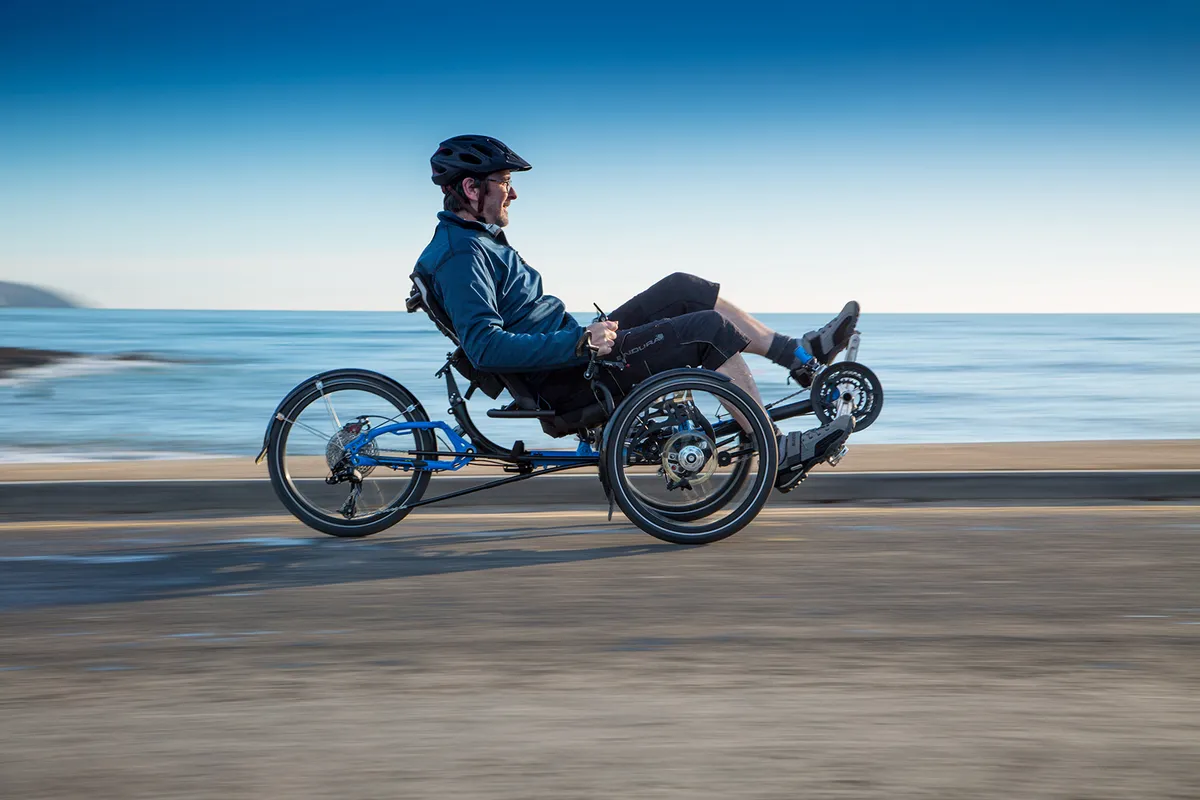
Quite simply, an adult tricycle is a cycle with three wheels. Adult tricycles have a single wheel and a pair of wheels, either at the rear or the front.
The sitting and steering configuration and drivetrain vary little from a standard two-wheel bicycle, with the rider atop a saddle and powering the cycle with their legs.
There are many reasons why adults ride tricycles as opposed to two-wheel cycles. Some adult tricycle riders have moved across to three-wheel cycles due to balance or health issues.
Other tricycle riders are part of the nearly 10 per cent of UK adults who have never learned to ride a bicycle. Many adults find that learning to cycle is significantly easier with three wheels providing a stable platform from which to get going.
Within the UK, and globally, there are a wide variety of tricycle manufacturers ranging from the likes of Pashley, which offers a vintage-style tricycle, to more niche adult tricycle specialists who create rugged off-road mountain-ready or disability-specific trikes.
Pros and cons of adult tricycles

The greatest advantage of a tricycle over a bicycle is the cycle stays upright when you start and stop moving.
However, once you’re under way, the terrain you’re riding on can have a greater impact on stability with off-camber and pot-holed paths and roads causing instability that you naturally avoid on a two-wheel bike.
Tricycles generally have low step-throughs making them easier to mount than many bicycles, and a good choice for some older riders. The large space between the pair of wheels is ideal for storage or carrying children.
Unlike bicycles, where larger wheels increase stability, larger wheels on trikes raise the centre of gravity making them less stable on uneven terrain or at speed.
Some electric trikes include a ‘walking’ function so that riders can move at a slow pace without turning the wheels. Riders can find this gives them the confidence to ride more and further, which in turn can build the fitness they need.
The electric motor assistance means a loaded trike with shopping or passengers can still make it up hills.
Tricycles can be tailored to the individual needs of disabled riders in several ways. Riders can be made to feel more secure and comfortable on tricycles, with the addition of trunk and torso support and even ankle foot orthoses (AFOs), which keep their feet and ankles in the correct alignment and in position on the pedals.
Sadly, due to increased engineering and reduced production volumes, tricycles tend to be more expensive than standard bicycles. However, there is a good market for second-hand trikes, which is the best way to buy a ‘cheap’ trike.
Types of adult tricycle
Delta tricycles
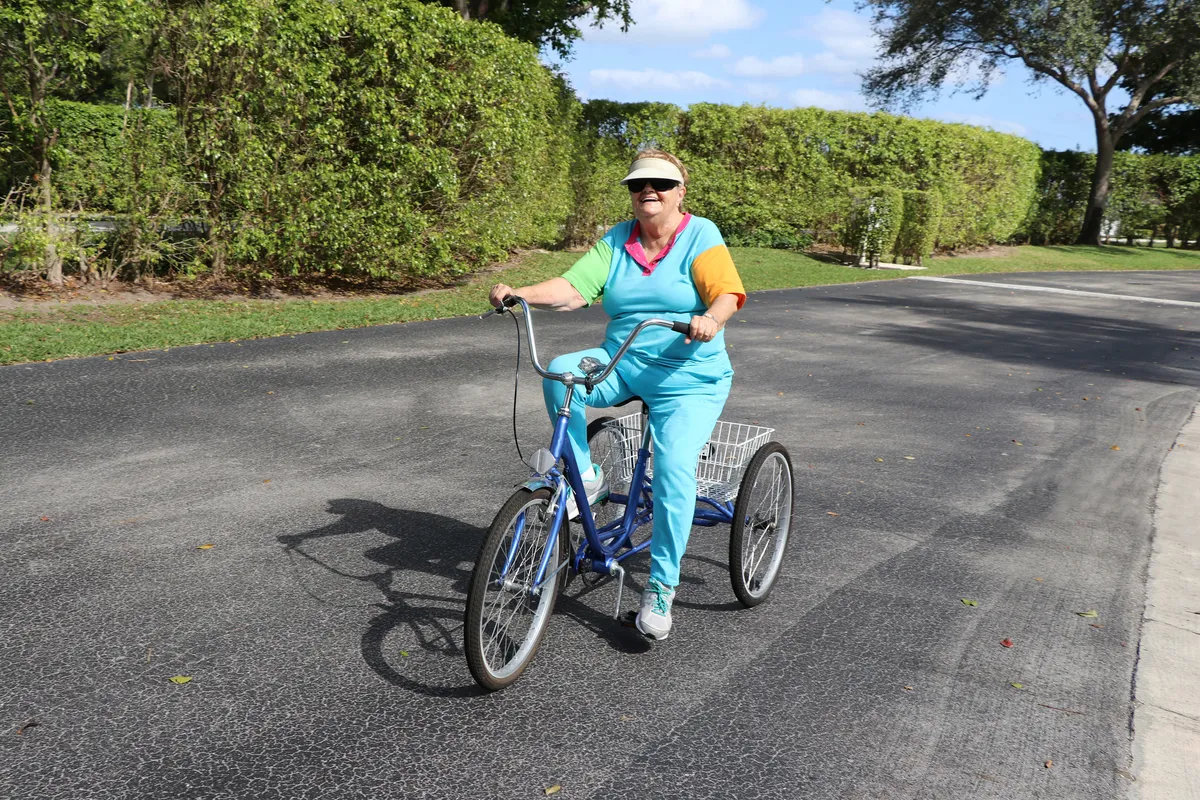
Delta tricycles feature a single front wheel and pair of wheels at the rear. These tricycles provide a wide wheelbase and low centre of gravity, giving stability and storage space. Most of the adult tricycles on the market are in this format.
Tadpole tricycles
Tadpole tricycles have two wheels at the front and a single rear wheel. These are great for riders with spatial awareness issues because they can see the width of the two wheels and know immediately whether they can fit through a gap.
Tadpole tricycles can also be more stable than delta tricycles, so this wheel configuration is more common on tricycles for off-road riding.
Off-road tricycles
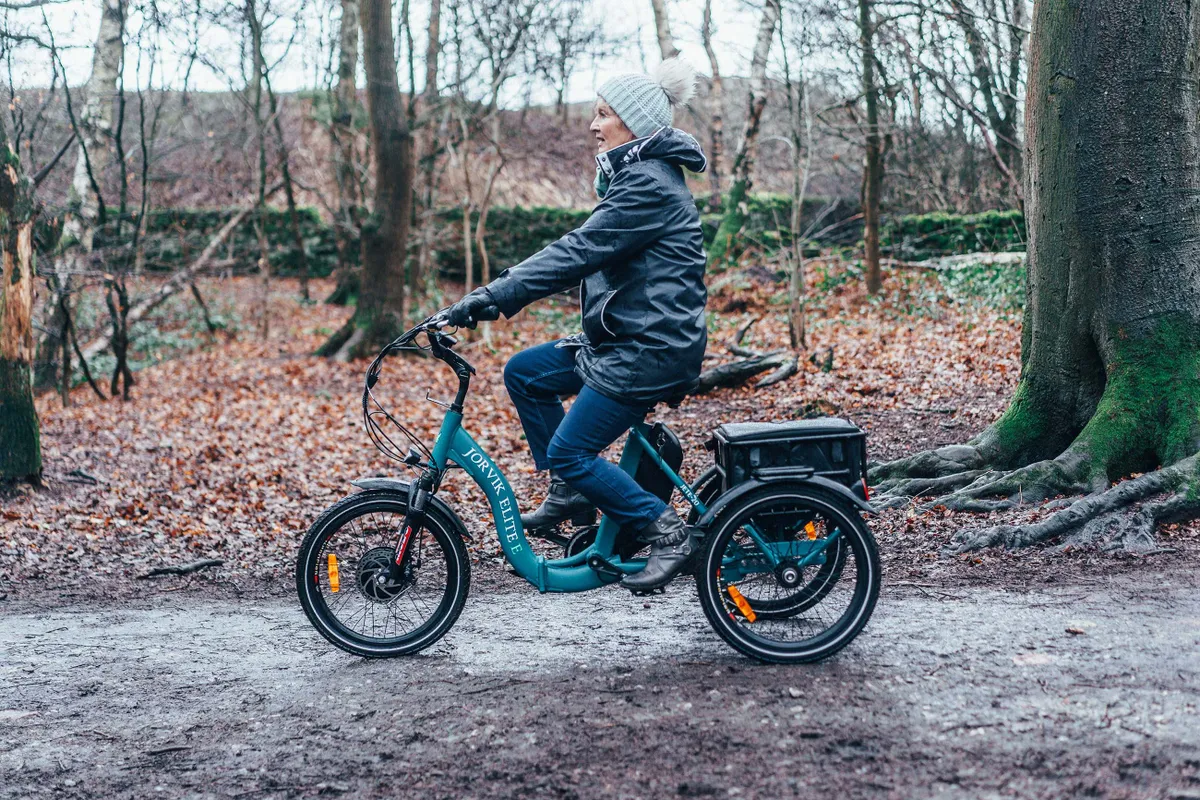
Off-road tricycles are designed to go over rough terrain, giving riders access to more of the countryside.
They will often feature large-volume tyres with plenty of grip and a suspension fork for a smoother ride.
Off-road trikes often include a larger 24in front wheel with smaller 20in rear wheels. This combination of wheel sizes aids manoeuvrability and stability because the smaller wheels at the rear reduce the centre of gravity overall.
Electric tricycles
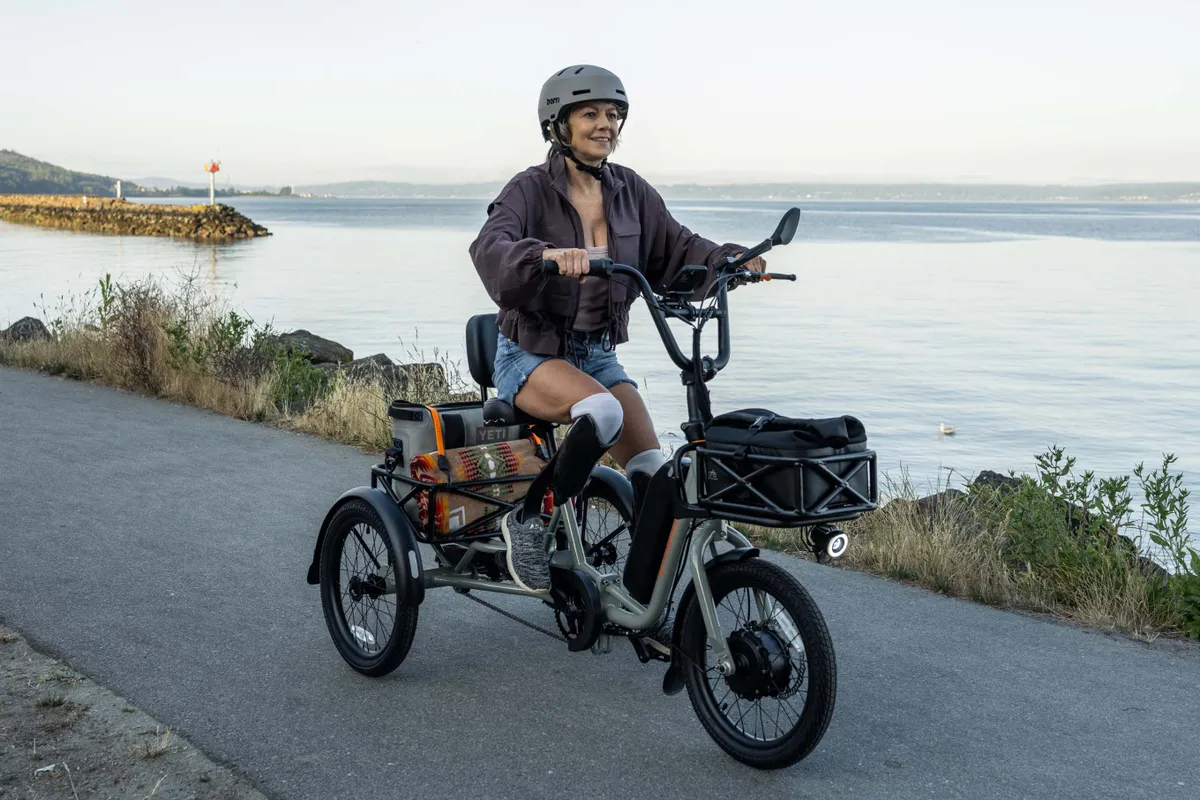
Electric tricycles are increasingly common because they help riders cycle with the added weight of luggage and enable them to travel further. Electric tricycles also reduce the need for wide gear ratios.
Like on the best electric bikes, the electric motor’s assistance kicks in with pedalling. Many electric tricycles also have a walking function and a throttle, which can overcome inertia when setting off.
Disability tricycles
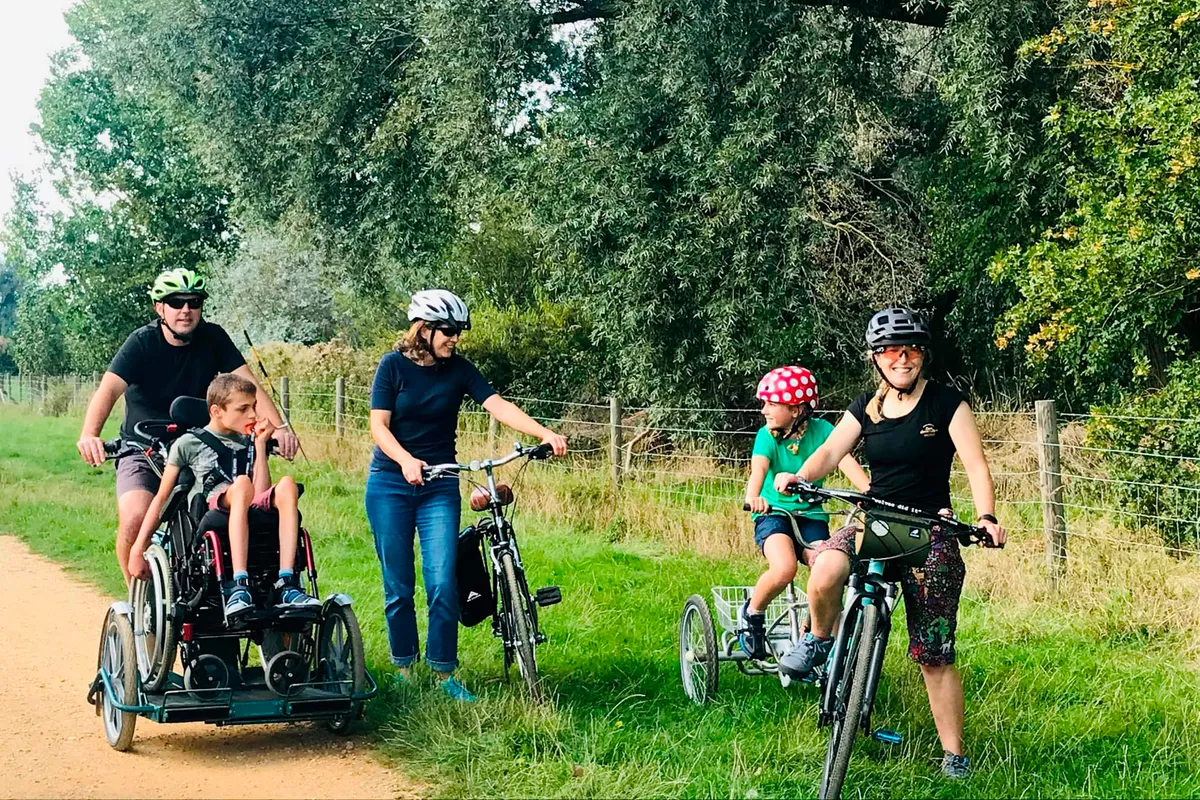
Beyond unique adaptions for a rider, such as torso support or pedal-related devices, disability tricycles are generally wheelchair transporter trikes.
These tricycles have a flatbed at the front that holds a wheelchair or a bucket seat, which supports the passenger.
These adaptive cycles enable people with paralysis to enjoy the experience of cycling.
Racing and touring tricycles
More akin to their two-wheeled counterpart, racing and touring tricycles often feature drop bars and 700C wheels.
They are elegant speed machines, which are comfortable and capable of long-distance riding.
The Tricycle Association is a great place to start if you’re looking to ride one of these.
Folding adult tricycles
The downside of adult trikes can be their size, with the large wheelbases making them difficult to store or transport.
Folding adult tricycles are one option if space is a concern. Many folding tricycles fold in the middle, reducing their length, and there are some that fold small enough to fit through a conventional doorway.
If you’re looking for a tricycle that folds even smaller, the Italian manufacturer Di Blasi has created a trike that folds completely, leaving you with a cube barely bigger than the wheel diameter.
How to choose the right adult tricycle for you
Just like buying any cycle, it’s worth considering who will be using an adult tricycle and where and when they will be doing so.
What kind of cyclist are you?
Are you moving over from two-wheeled cycling or starting out fresh on your wheeled adventure?
Strange as it sounds, coming to a tricycle from a bicycle can be slightly harder because you have to learn a new way of balancing on a cycle. Either way, make use of traffic-free spaces to build your confidence.
If you have reduced mobility or tire easily, an electric tricycle with a ‘walking’ throttle could make all the difference for you. The throttle means even when you’re not able to pedal, you can sit on the trike and move along at a walking speed until you’re home or ready to get going again.
If you have visual impairments or struggle with spatial awareness, you may prefer a tadpole trike, where the wider pair of wheels are in front making it easier to gauge gaps.
Where will you be riding?
Where you will be riding will have a significant effect on which adult tricycle you opt for:
- Flat, smooth terrain: a tricycle with slick, narrow tyres is likely a good idea.
- Hilly terrain: the assistance of an electric tricycle might be welcome.
- Off-road: a tricycle designed for off-road riding or with larger, knobbly tyres will likely be the best choice.
If you are planning to replace your car with a tricycle then going for an option with good storage baskets and mudguards will help you carry shopping and nip around town without too much impact from the weather.
A folding tricycle might be a good idea if you are transporting it before riding.
Answering these and other questions will help narrow down the parameters of the search, but we always recommend test-riding a range of trikes before you buy.
What to look for in an adult tricycle
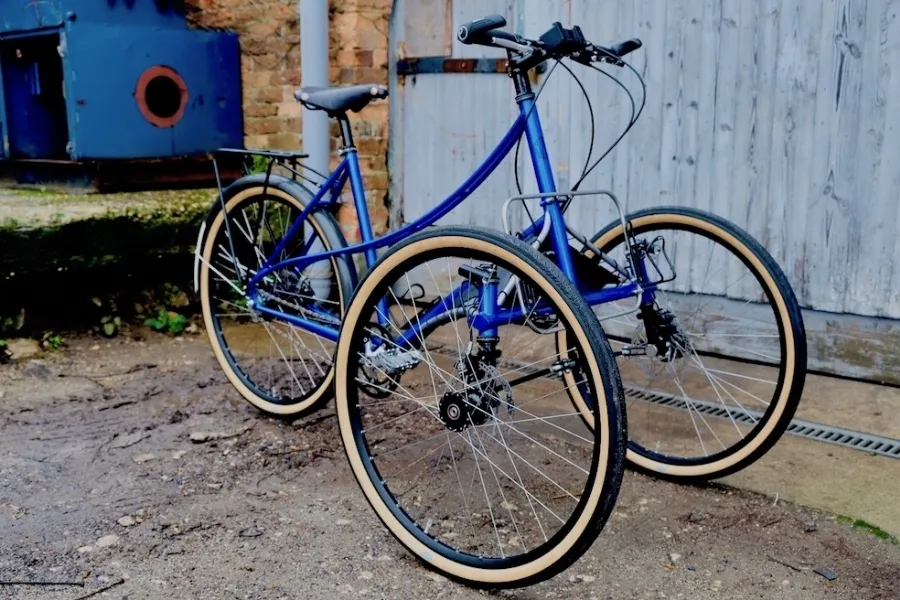
There are several things to look for when buying an adult tricycle. They include the following.
- Wheel size: generally, go for smaller wheels or a mix of small rear wheels and a large front wheel to give the optimal mix of solid steering and a low centre of gravity.
- Gearing: this is less of a consideration if you’ve got electric assistance, but it’s worth thinking about in terms of how the gears are controlled. A grip shift is often easier for smaller or weaker hands, but it needs to be well-maintained to stop the grip from becoming hard to turn.
- Low step-through height: this is one of the main attractions for a tricycle unless you’re going for a racing tricycle.
- Mudguards: these are worth investing in unless you’re heading off-road and need all the clearance you can get. Mudguards protect both rider and the luggage from getting drenched.
- Electric assist: UK Government legislation on ‘electric power assist cycles’ (EAPC) states that the power of the battery and the speed limit for both the throttle and overall supported speed are key to making them road legal. Some mountain tricycles have more powerful motors, but they are not necessarily road legal, so it’s important to check with the manufacturer before you ride them on the road. Our section on the legalities of adult tricycles explains more.
Are tricycles safe for adults?
Absolutely. The raised, upright seating position means riding an adult tricycle is comfortable, and you are very aware of your surroundings.
If you’re used to riding a bicycle, it can take a little longer to become accustomed to the feel and balance of a tricycle. For example, when you’re turning a corner on a trike it’s important to stay upright rather than leaning into the corner as you would on a two-wheeler. This offers a counterbalance to the tricycle and helps keep you stable.
Is it legal to cycle a tricycle on the road?
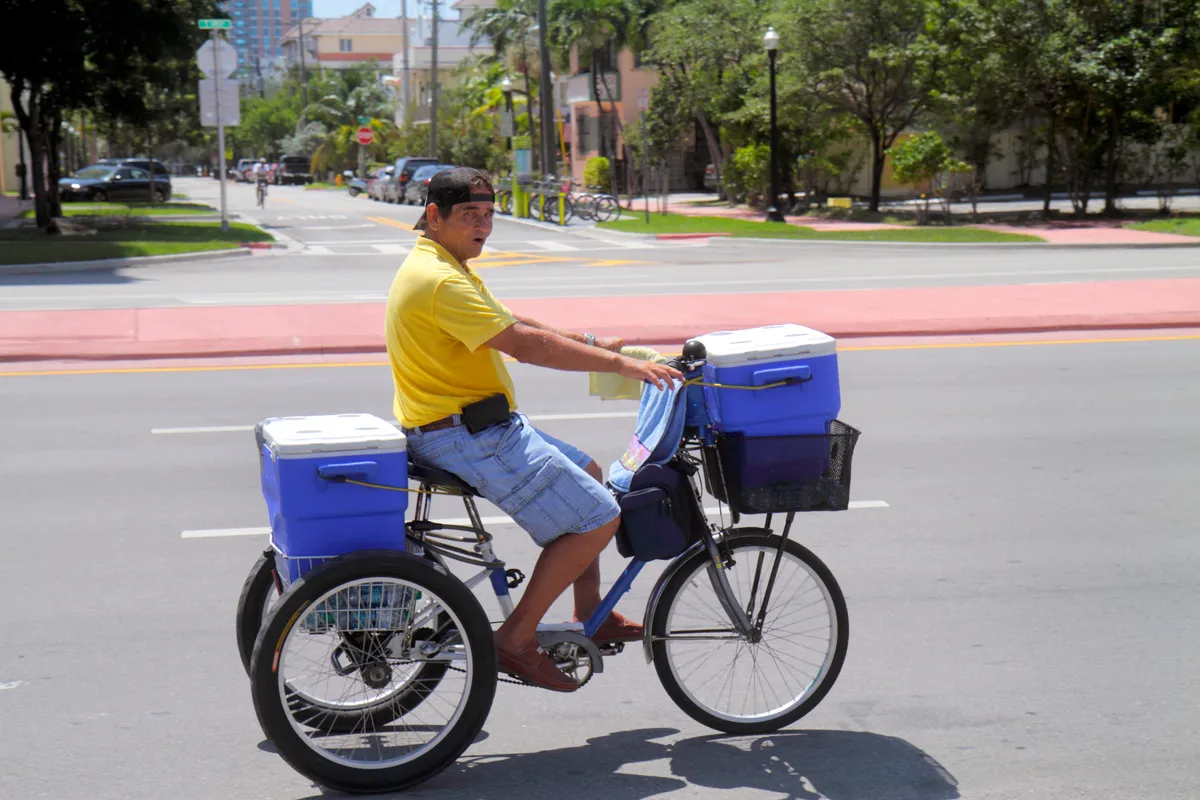
Tricycle laws in the UK
Yes, it is legal to ride a tricycle on the road in the UK – providing you meet the requirements for brakes and electric assistance.
In the UK, any cycle needs two independent brakes.
For tricycles, this can be a rear brake (often a disc or drum brake at the centre of the rear axle) combined with a brake at the front.
Alternatively, some tricycles simply have two brakes at the front, either a pair of rim brakes or a rim brake and drum brake.
In addition to having two brakes, tricycles with electric assistance must meet the UK Government EAPC legislation:
- Max 250W power output
- Max walking/throttle speed of 3.7mph (the motor will cut out above this speed when using the throttle)
- Max motor-propelled speed 15.5mph to allow for overtaking but no faster (the motor cuts out at this point)
- Not all mountain tricycles conform to EAPC legislation and are therefore not road legal in the UK.
Tricycle laws in the USA
In the USA, the legislation for riding a tricycle is generally the same as for riding a bicycle.
It’s important to check for any State-specific legislation, which takes priority in that area. The League of American Bicyclists has links to different State transport laws and actively promotes cycling through its Bicycle Friendly America Program.
The legislation regarding electric tricycles is a bit more complex. The Federal Electric Tricycle Law covers the categorisation of electric tricycles (Categories 1-3). At its most basic, the law distinguishes Category 1 and 2 tricycles as limited to 20mph, while Category 3 tricycle motors cut out at 28mph.
Requirements between States differ but in general, they give minimum rider age requirements, obligations to register and/or insure the electric tricycle and also state whether it’s obligatory to wear helmets when riding.
